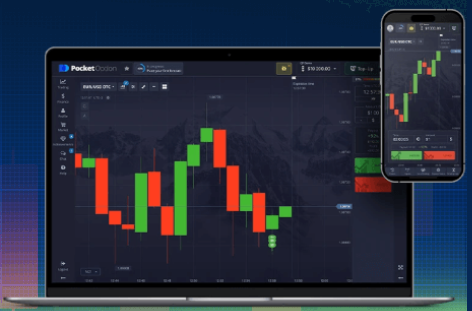
Mastering Pocket Option Strategies for Optimal Trading
La Mejor Estrategia Para La Opción De Bolsillo
Pocket Option trading has become a prominent arena for traders looking to capitalize on quick market changes and profit from short-term trades. A solid Pocket Option Strategy can significantly affect your financial success, as it provides a structured approach to analyzing market conditions and making informed trading decisions. This article explores various effective strategies to help you optimize your trading performance.
Understanding the Basics of Pocket Option Trading
Pocket Option is a platform offering binary options trading, where traders predict the price movement of various assets. To become proficient in Pocket Option Strategy, one must first understand the basic principles of binary options trading, including asset categories, trading options, and market analysis tools.
The Importance of Market Analysis
Analyzing market conditions is a critical component of developing and implementing a successful Pocket Option Strategy. Traders commonly use technical and fundamental analysis to forecast price movements and identify potential trading opportunities. Technical analysis focuses on historical price data and chart patterns, while fundamental analysis examines economic, financial, and other external factors that may affect asset prices.

Popular Pocket Option Strategies
There are numerous strategies inside the realm of Pocket Option, each with its own set of rules and indicators. Here are a few popular options:
1. Trend Following Strategy
This strategy involves identifying and trading in the direction of a dominant market trend. Traders using this approach often utilize moving averages, Bollinger Bands, and other trend indicators to determine entry and exit points.
2. Reversal Trading Strategy
Reversal strategies focus on predicting market turning points. By identifying overbought or oversold conditions, traders use reversal signals to profit from price corrections. Tools like the Relative Strength Index (RSI) and Stochastic Oscillator are commonly employed for this purpose.
3. Breakout Strategy
The breakout strategy is based on the idea that once the price breaks through a significant support or resistance level, it will continue moving in that direction. Traders watch for volume changes and use indicators like the Average True Range (ATR) to set stop-loss orders.

Risk Management in Pocket Option Trading
Effective risk management is key to sustaining long-term success in Pocket Option trading. Traders should implement stop-loss orders to limit potential losses and consider position sizing techniques to manage risk and maximize profits. Consistently evaluating and adjusting your strategy is essential to adapt to changing market conditions.
Utilizing Financial Tools and Resources
There are numerous tools and resources available to aid in developing and refining your Pocket Option Strategy. Traders can access educational content, webinars, and tutorials provided by the platform to enhance their knowledge and skills.
The Role of Psychology in Trading
Psychology plays a critical role in trading, influencing decision-making and risk perception. Traders must strive to maintain emotional discipline and avoid common psychological pitfalls, such as greed and fear. Developing a trading plan and staying committed to it can help mitigate the effects of emotional decision-making.
Conclusion: Enhancing Your Pocket Option Strategy
Successful trading with Pocket Option requires a combination of solid market analysis, effective strategies, and disciplined risk management. By exploring different strategies, understanding market dynamics, and continuously refining your approach, you can enhance your trading skills and increase profitability. Always remember to stay informed, remain adaptable, and prioritize long-term growth over short-term gains.
FEB

About the Author